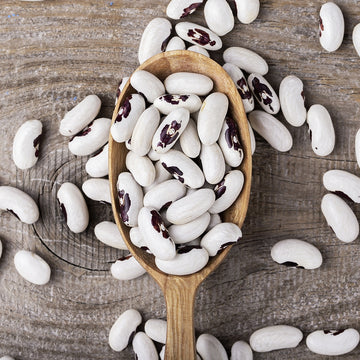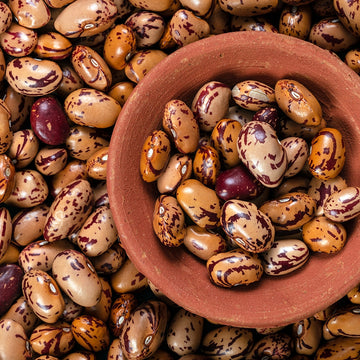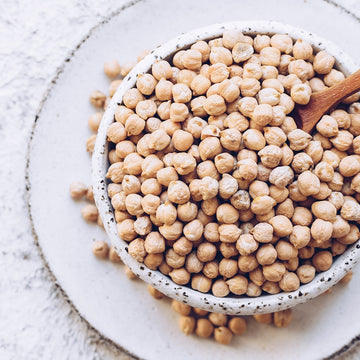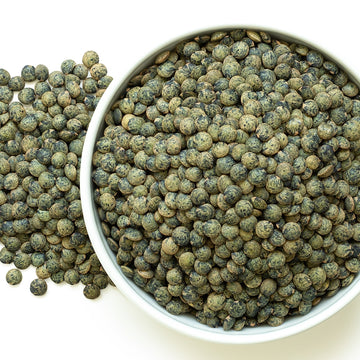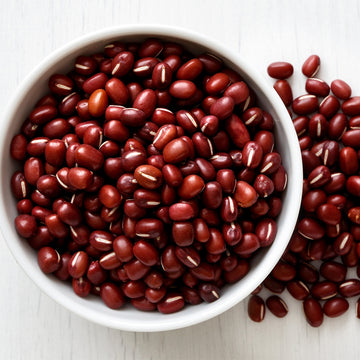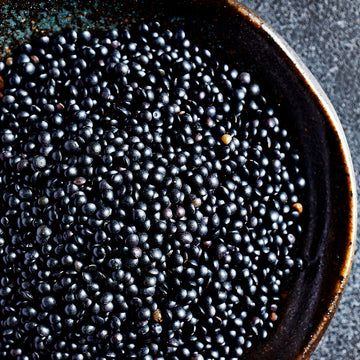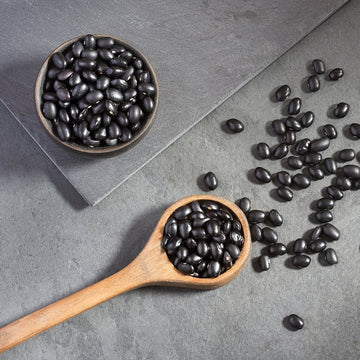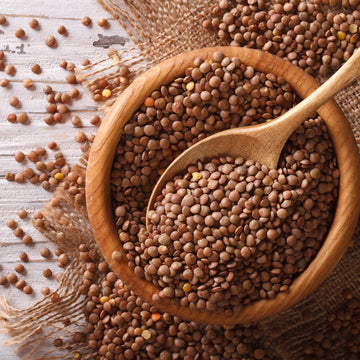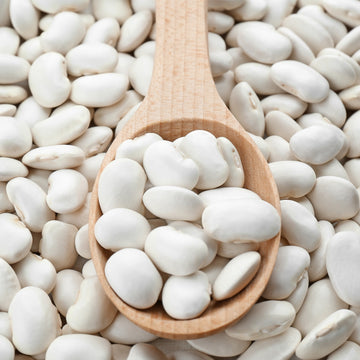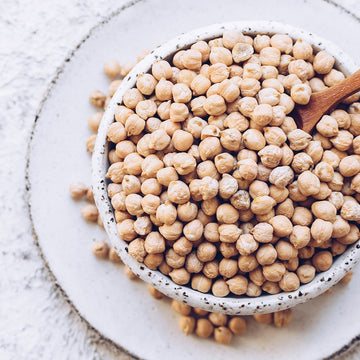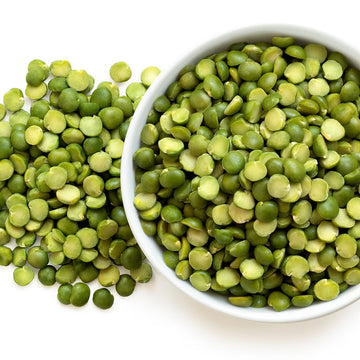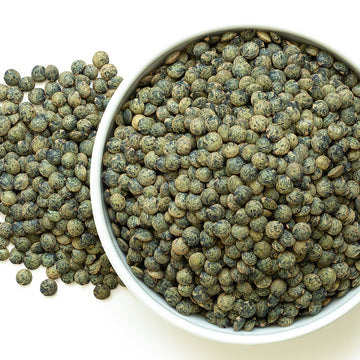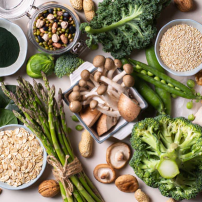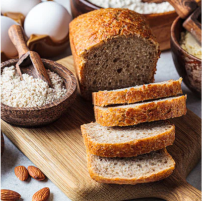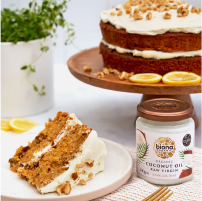Plant-based diets are all the rage at the moment and for good reason. Not only are they better for us, they're better for the environment. One of the staples of vegan or plant-based diets are beans and lentils. So we've put together a handy guide to beans and lentils to help you make the most of them.
These store cupboard favourites are bursting with nutrients and can be easily mixed and matched to create filling and nutrient-laden fare. Today we're taking a look at all the various types of pulses plus how to cook them and use them in this handy guide to beans and lentils.
The Nutrient Value of Pulses
Pulses (peas, beans and lentils) have been a staple food since well before the birth of agriculture and many stone age burials have also included these foods among the grave goods. With the exception of peanut (technically a bean but usually classed as a nut), pulses are low in fat and sodium but high in protein, starch, fibre and minerals (especially calcium, iron, potassium, magnesium, phosphorous, copper and zinc). Pulses also contain folic acid which helps combat anaemia.
Although the protein in pulses lack some of the essential amino acids, these are especially abundant in wholegrains. Thus a diet that combines these two food groups can provide a balanced protein intake without the need to eat any meat or dairy products.
Most pulses contain some indigestible and/or mildly toxic substances (hence the infamous flatulence problem) but the soaking and skimming method we've outlined below should leach out or destroy the troublesome chemicals. If your system is especially sensitive to this problem, drain the beans a second time after 10 minutes of re-boiling and restart in fresh water. Using certain herbs (especially savoury, caraway seeds and fennel) can also be a help.
Pre-cooked tinned beans and lentils should always be rinsed before use to remove all the cooking water left in the tin.
A Handy Guide to Beans & Lentils
Here we take a look at the array of beans and lentils available, plus how to cook and use them in this handy guide to beans and lentils.
Soya Beans
Soya beans are probably the best known of all beans. They're not often eaten as just beans but instead are used as the raw material for tofu (bean curd), miso, soya sauce, TVP and many other products.
Kidney Beans
All members of the kidney bean group have a robust, ‘earthy’ flavour and a slightly dry texture which makes them very well suited for use in stews, casseroles and pâtés.
Red kidney beans are best known as a component of chilli con carne. They contain a particularly indigestible toxin, lectin, so it is very important to soak them first and cook them thoroughly.
Pinto beans are both similar to red kidney beans but are softer and more delicately flavoured. They also have much less lectin in the skin.
Black Turtle Beans
Black turtle beans are the everyday bean of Mexican cookery as they are well suited for stews and refrying.
Butter Beans
Butter (lima) beans are the largest in the group. Their flesh is quite dry so they make an excellent counterpoint to slightly oily or greasy foods. In many European cuisines, they are often added to lamb or pork casseroles.
Chickpeas
Chickpeas are the staple bean of North Africa and the Middle East. Although they can be mashed into a classic bean pâté (hummus), they don’t go overly soft during cooking so they're an excellent bean for salads.
Haricot
The haricot group are all delicately flavoured and relatively soft textured. This makes them well suited for salads and for cooking and serving in a sauce.
Haricot (navy) beans are the usual bean to be found in baked beans. They hold their shape well and are the ideal bean for cooking in a sauce.
Green flageolet beans, creamy-white borlotti beans and white cannellini (alubia) beans are all varieties of haricot – slightly softer and with a finer flavour. All three are excellent in salads, pies and sauces and are used widely in French and Italian cooking.
Aduki & Mung Beans
Aduki and mung beans are both used extensively in the East. Adukis are well suited for all forms of cookery and are the staple bean of Marcobiotics. Mung beans are used to make bean sprouts but are also suitable for stews and pâtés.
Blackeye Beans
Blackeye beans are actually peas. They're very quick to cook and don’t need pre-soaking. They have a similar ‘earthy’ flavour to kidney beans but are much softer.
Split peas, lentils & dhals
Split peas, lentils and dhals also don’t need pre-soaking and are quick to cook. During cooking, they all tend to break apart into a paste (green and puy lentils less so). Nearly every region in the world has dishes that are based on a pea or lentil paste flavoured with herbs and/or spices (from mushy peas to dhal). Peas and lentils are also used to make thick warming soups.
Basic Soak & Boil Method for Beans & Lentils
1. Put the beans into a large pot or bowl, cover with about 4 times their volume of water and leave to soak for at least 6 hours. Drain off the soaking water and rinse the beans thoroughly.
2. Put the beans and lentils in a saucepan with twice to three times their volume of water (do not add salt as it toughens the skins). Bring rapidly to the boil. Once they are boiling, a thick foam will form. Keep skimming this off for about 5 minutes. Drain and re-start with fresh water.
3. Turn down the heat and simmer uncovered (see chart below for cooking times). Add more water if necessary. When ready the beans and lentils will be soft and floury without any trace of crunchiness.
4. Drain and serve.
Approximate Cooking Times
The following times are for ready to eat beans & lentils. If they are to be further cooked (e.g. added to a stew), then these times can be reduced by up to 20%.
| Blackeye, Red Lentils | 30 mins |
| Aduki, Mung, Split Peas, Brown Lentils | 45 mins |
| Black & Red Kidney, Pinto, Black Turtle | 1 hour |
| Haricot Group, Green & Puy Lentils | 1 hour |
| Butterbeans, Chickpeas | 75 mins |
| Soya Beans | 3-4 hours |
Lentils, mung beans, blackeyes, split peas, dhals: omit stage 1 (just rinse them to remove any dust) and there is no need to replace the water in stage 2. Soaking will reduce these cooking times by about 25%.
Recipe Suggestions for Beans & Lentils
There are so many ways to uses pulses. A classic, you can't beat beans on toast and what's better than a healthy homemade version? Combine haricot or cannellini beans with tinned tomatoes, onion, garlic, maple syrup and some paprika for hearty and healthy beans and serve on wholegrain toast.
Looking to spice up your lunch menu? This comforting Vegan Coconut & Lentil Lime Dhal curry will warm up your evening. You can also use beans and lentils as a base for veggie burgers. Pop them in salads or bulk up soup, chilli or curries! Pick up a brilliant range of beans and lentils on Evergreen.ie.
Are you interested in learning how to sprout seeds? Then read our blog 'Soaking and Sprouting Seeds, Grains & Legumes'.
Checked and updated: 2 September 2021



